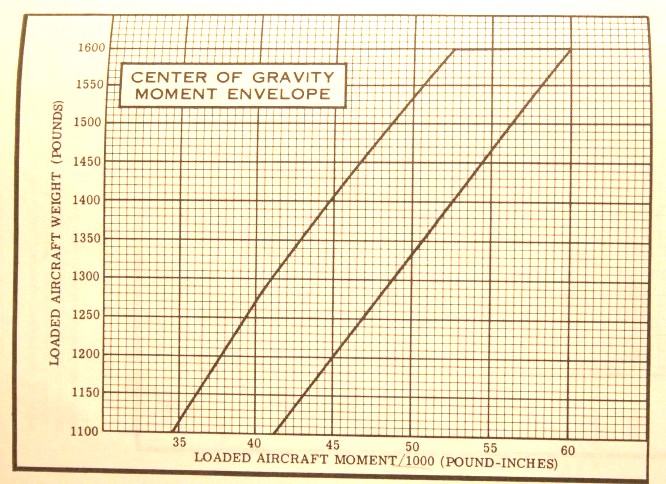Some manufacturers provide graphs, which the pilot uses to determine the weight and balance of the airplane. The loading graph below is taken from the pilot's handbook of a Cessna 150. The loading graph is used to calculate the moments of loads as they are added.
For example, if the pilot and passenger both weigh 180 pounds, their moment could be found by first beginning on the left of the graph at the 360 pound mark. Then, follow the 360 pound mark to the right until it intersects the solid pilot and passenger line. A moment of 14.0 is indicated at the bottom of the graph.
If we took full fuel, we would add a moment 5.7 and a weight of 135 pounds, as indicated by the "Fuel(standard tanks)" line. The total for these two items is 495 pounds and a moment of 19.7.
Notice the moment indicated on the graph is pound-inches divided by 1000. So, the total moment of these two items is 19,700 pound-inches. Manufacturers often divide the moment by 100 or 1000 in charts and tables, in order to simplify CG calculation.
After the loading graph has been used to calculate the moments for all the items to be added to the airplane, add the weights and moments to obtain the airplane's total loaded weight and moment, making sure to include the airplane's empty weight and moment.
Transfer the loaded airplane's weight and moment to the CG moment envelope chart in your airplane's handbook.
Enter the total weight on the left and the total moment on the bottom of the graph. If the two intersect inside the envelope, the airplane is loaded the airplane's weight and balance is satisfactory. If the two intersect outside the envelope the weight and balance of the airplane is not acceptable. Make appropriate adjustments until the weight and balance lies inside the envelope.

